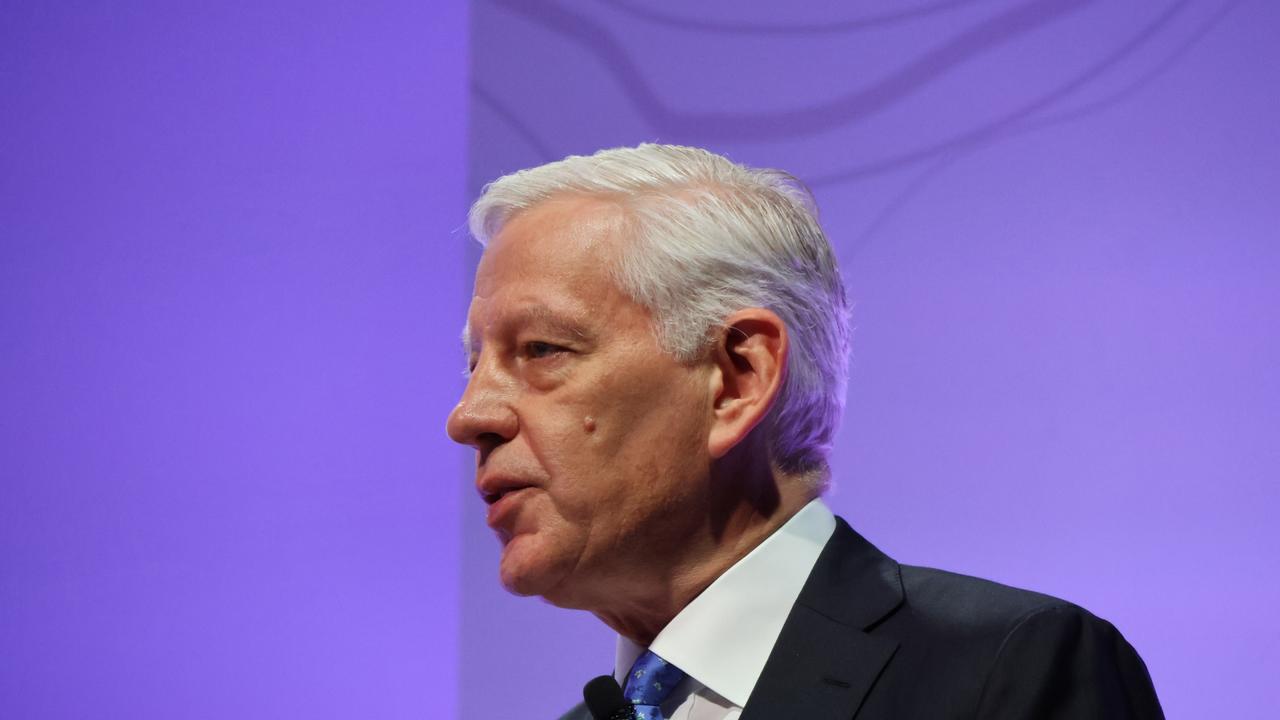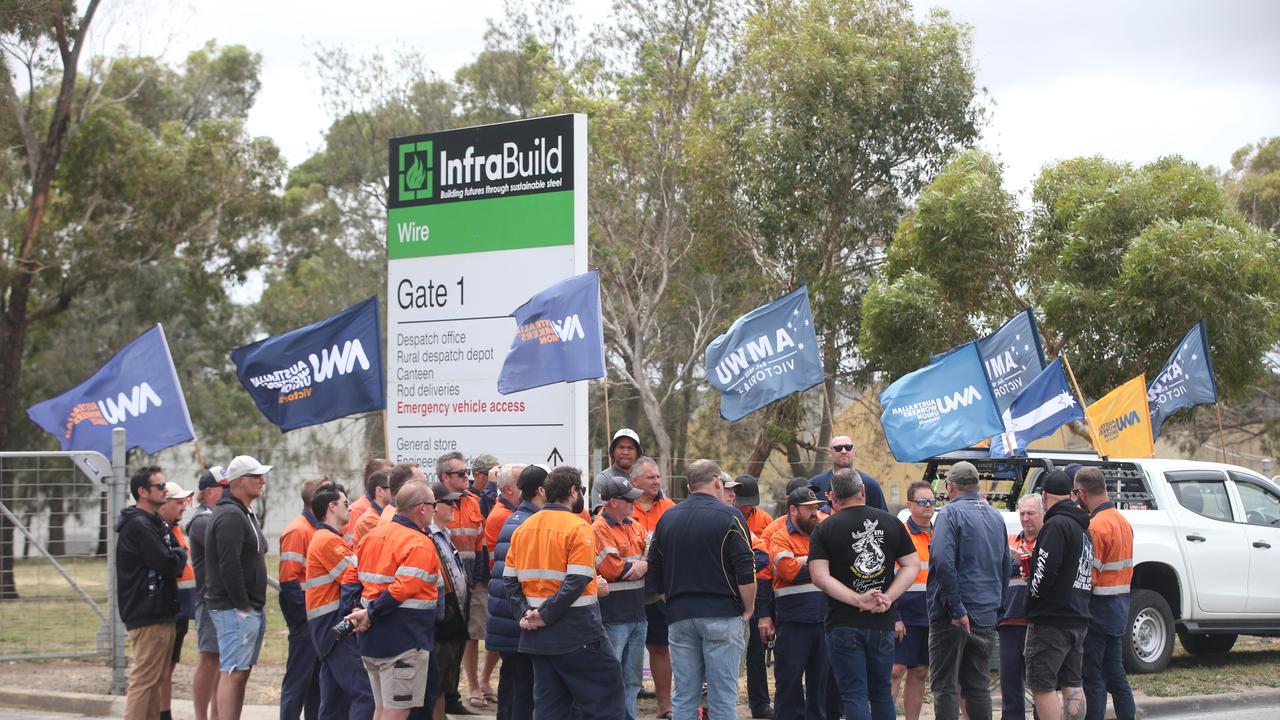Andrew Forrest’s green dream finally wakes up to financial reality
A former top General Electric executive is finally putting some sense of discipline around the billionaire’s wildly ambitious green hydrogen plans.
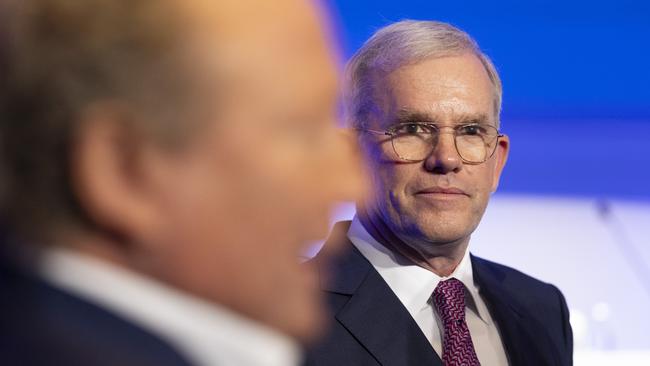
Business
Don't miss out on the headlines from Business. Followed categories will be added to My News.
Andrew Forrest’s wildly ambitious green energy dream may have finally found the counterbalance desperately needed before investors can get some confidence about the plans.
Newly appointed Fortescue Future Industries boss Mark Hutchinson is putting some discipline into the business, which has next to no commercial market and has so far proven to be a money pit at a time when iron ore prices are cooling.
As a former chief of General Electric in Europe, overseeing 100,000 staff, Hutchinson had to live and breathe the “GE Way” of highly controlled processes and intense project management in manufacturing. He also had to win over major German industrial clients by proving GE could make things better, commercially and with an eye for quality control.
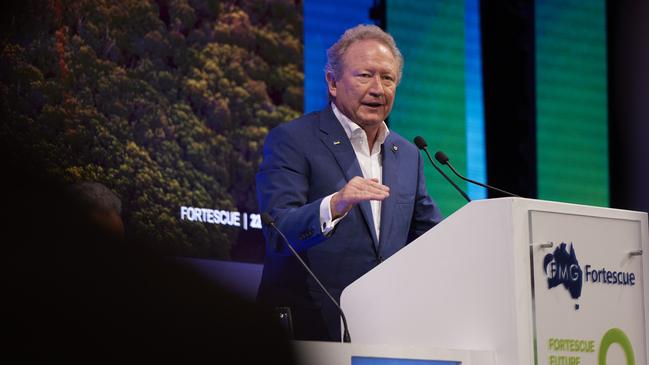
This is what Forrest’s green machine badly needs in order to win over serious investors.
While multi-billionaire Forrest has been travelling the world meeting presidents and prime ministers, talking up a big game in his bid to turn Fortescue from a dig and deliver iron ore miner into a green hydrogen powerhouse, it’s now up to Hutchinson to move some projects into reality while keeping some of that GE discipline.
‘The final five’
Here Hutchinson has whittled down a list of dozens and dozens of Forrest’s green pitches to just five projects that he expects will move to final investment decision this calendar year. The projects are in different stages of development, less about hype and now being put through a lens of commercial rigour to see whether there is customer support.
They include green hydrogen to be used to power heavy transport in the US; green ammonia production designed for export using Brazilian hydro power; green ammonia production slated for domestic fertiliser production in Kenya; and Norway, rich with hydro power, is also being slated for green ammonia production for export to Europe.
Australia too is counting down to a final investment decision on a 500MW electrolyser in Queensland capable of producing 70,000 tonnes of green hydrogen to be used in ammonia production.
The US and Australia remain promising because of the ease of servicing a domestic market compared to the complications of exports, but cheap energy remains a major determinant.
There is still a long way to go to convince investors.
Hutchinson says his manufacturing focus is on finding commercial markets where renewable power is available and affordable. Also in favour are places where incentives exist, which is a nod to US President Joe Biden’s green-focused $US400m Inflation Reduction Act.
Each of the projects have to make a case for a financial return before moving to the next phase, Hutchinson says. There is also a promise to give investors more information around the financials and expectations of the projects, as many are being built into market that don’t exist at the moment.
“We understand that we have to compete for capital within the company … so we will make sure that the economics are fine,” he says.
Hutchinson at times overshadowed Fiona Hick’s debut on an investor call for Fortescue’s March quarter production numbers. But this was the inevitable outcome of Forrest’s decision to create a messy joint CEO structure where Hick oversees the value-creating mining business and Hutchinson looks after blue sky at Fortescue Future Industries.
While iron ore mining is where the money will be made for years to come, Forrest has positioned Fortescue Future Industries as an all-in bet on the renewables revolution.
Hick took charge of Fortescue Metals in February after an extended search to replace former boss Elizabeth Gaines.
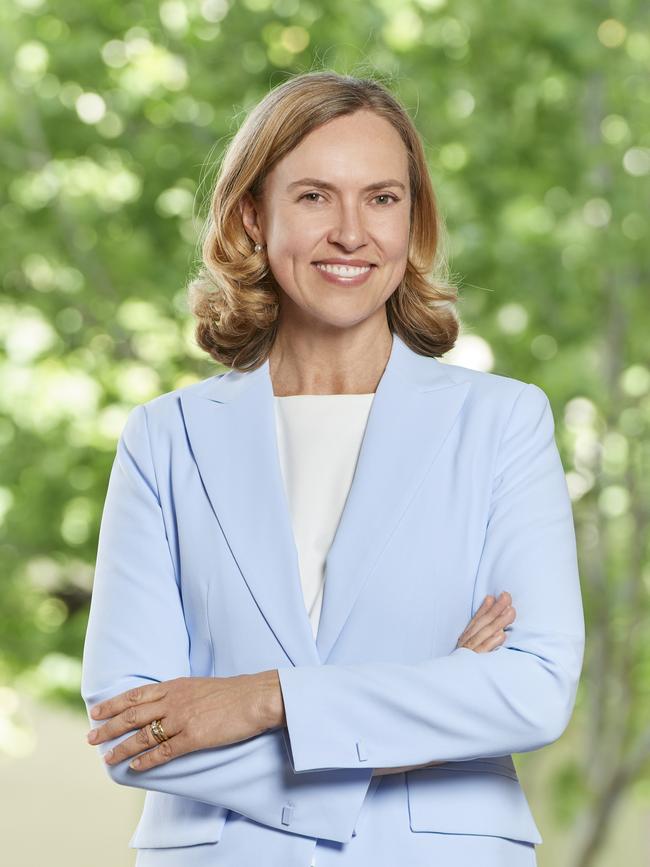
Here the former Woodside executive delivered investors the message that Fortescue is shipping more iron than ever and costs remain disciplined, rising just 1 per cent in a high inflation market. Even so she can’t control the environment, with iron ore prices sliding back towards a five-month low of $US100 a tonne.
Concerns about the pace of recovery in China and a jump in inventories is behind the latest shift in sentiment. Even so, Hick is a China optimist and says demand for iron ore will still increase this year.
Fortescue, too, is at the very start of the ramp-up of the delayed and high-cost Iron Bridge magnetite project where the first concentrate was produced over the weekend. The site is still in the commissioning phase and Hick watered down Fortescue’s previous expectations that around a million tonnes of the magnetite ore would be likely by the end of June. She says it will be less than that, but there has been strong demand from steel mills for the richer ore.
BlueScope boom
A little more than a week out from corporate Australia’s profit confession season, BlueScope Steel has blown expectations out of the water with a monster earnings upgrade.
Rather than what’s going on in the domestic economy, BlueScope is among a number of global manufacturers starting to ride the tailwind of Joe Biden’s massive renewables and infrastructure spending spree.
And a decision by BlueScope boss Mark Vasella more than 18 months ago to make a $1bn bet to expand his US steel operations is now starting to deliver.
Combined there is more than $US1.4 trillion ($2.1 trillion) earmarked to be spent over the next decade repairing roads, bridges, airports and rail while spurring on a manufacturing boom by offering massive subsidies and tax credits to build everything needed for a green energy grid and transport network. All this needs steel, and lots of it.
The renewables-focused Inflation Reduction Act package is the single biggest driver as it looks to develop battery manufacturing, greener cars and process critical minerals. The package also has a bigger political objective of wrestling strategic industries such as hi-tech and EV manufacturing away from China.
The program is attracting billions in investment capital from around the world and all this spending is benefiting players like BlueScope, which has direct exposure to the US market through its North Star mini-mill in Delta, Ohio.
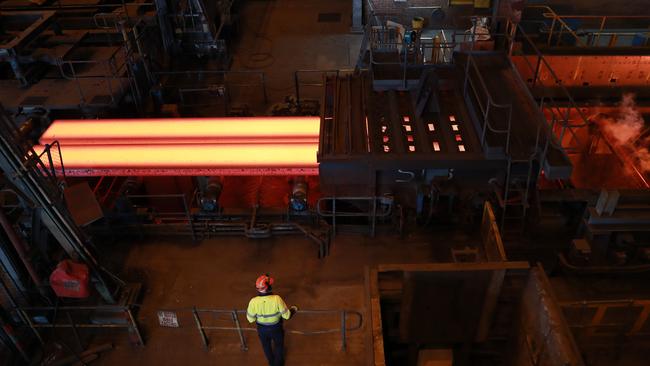
Others such as Rio Tinto are looking at expanding copper production in the US and even BHP is eyeing opportunities, with chief executive Mike Henry earlier this year basing himself in Washington for several weeks.
Fortescue is also circling the IRA incentives pot, looking at the US for an anchor point for its green hydrogen agenda. Fortescue’s renewables boss Mark Hutchinson told investors he was “overwhelmed” by the opportunity for renewable energy in the US. “The IRA is really making a massive difference,” Hutchinson said.
The Fortescue executive said the program was changing the shape and scale of green infrastructure in the US.
Other parts of the world including Europe, Canada and India have launched their own version of the scheme. This means Australia needs to move fast if it wants to play a role in the “value-added” chain of green industry.
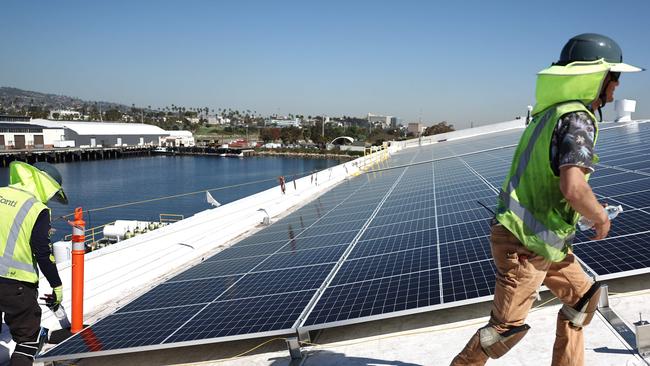
While Australia can’t compete with the quantum of the program, Hutchinson says there’s opportunity for green incentives that benefit manufacturing being built into a localised version on a bilateral basis.
This could see Australia and its major export partners “split the difference” on incentives because it benefits both countries.
Despite efforts by the US Federal Reserve Bank to cool the economy there, with the chances of a recession rising, US Steel prices have continued to be surprisingly strong, with long lead times for orders to be delivered. This shows, despite the economic swings, there is persistent demand for steel as infrastructure projects take off.
The US benchmark, Midwest hot rolled coil prices, are averaging $US1200 a tonne. Going into the Covid-19 pandemic, prices were depressed, stuck at less than $US500 a tonne.
BlueScope now expects underlying June half pre-tax earnings to be in the range of $700m-$770m. In February, it was offering a guidance range of $480m to $550m.
The earnings windfall is likely to see yet another extension of BlueScope’s share buyback with $380m outstanding under the current scheme. It also needs to build up its financial firepower as it nears final sign-off on a $1bn blast furnace reline project at its Port Kembla steelworks in Australia as it too prepares for a green steel future.
johnstone@theaustralian.com.au
More Coverage
Originally published as Andrew Forrest’s green dream finally wakes up to financial reality




